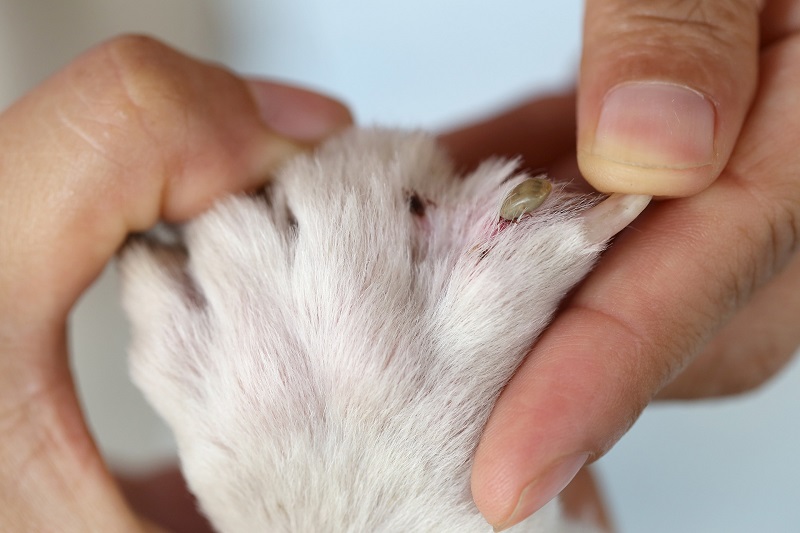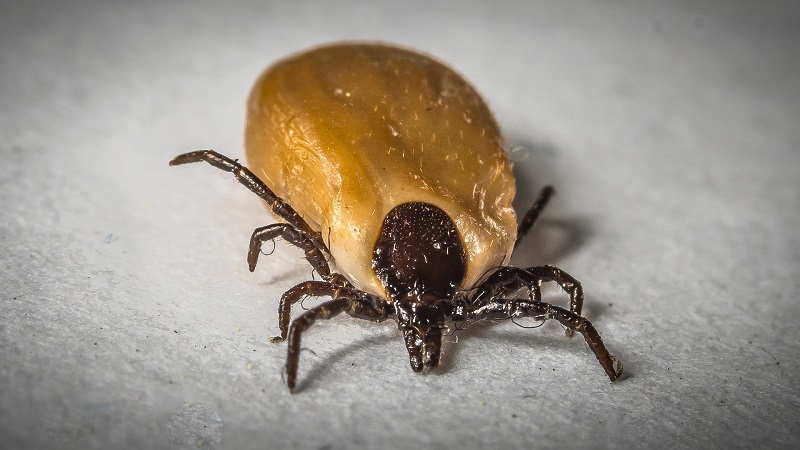
Spring is the time when all sorts of deadly insects come to life breeding among the flora and fauna. Now is the time to get on board with treatments to keep your double coated dog safe and free from the deadly paralysis tick.
What are Paralysis Ticks?
Paralysis Ticks are disease carriers that lurk in grass, shrub, bush, and forest. They like to climb vegetation and wait for a potential victim to jump onto or rub against. These little critters attach themselves to any part of the body (in fact I know of one case where they burrowed into the anus of a dog and by the time it got to the vet, it was too late). Our local vet even mentioned that he found 19 ticks on a koala! How it survived, I don’t know.
Although they are mostly out in force from September through to April, they are still to be found throughout the rest of the year living in such tropical climates such as New South Wales and Queensland in Australia.

How do Paralysis Ticks work?
Once a Paralysis Tick attaches itself to the body, it finds the best spot to embed and attach its head to, then sucks on the blood of the dog while releasing a deadly, toxic saliva into the bloodstream. The poisonous toxins take 2-3 days to fully enter and cause damage to the dog, so you won’t notice any symptoms until after a few days. By this time, the poison is fast to work its way through the body, paralyzing as it goes. Symptoms include being unsteady on their legs, difficulty breathing, difficulty swallowing, vomiting, and their voice changing tone or losing it altogether. If the tick attaches to the eye, it can cause paralysis of the eyelid which dries the eye out causing further damage.
What happens if my dog gets the deadly Paralysis Ticks.
We all know dogs need daily exercise – sometimes more than once a day. And the places we take them house all sorts of insects and animals roaming free. We live in a coastal town that also has some amazing bush, headland, and forest walks which we love to enjoy with our dog. However, there are other furry animals such as deer, kangaroos, wallabies, wombats, and koalas who share the same environment. We love seeing and greeting these animals, but they also carry ticks which can jump and easily attach themselves to dogs, which unfortunately happened to our six year old Japanese Spitz. Being a double-coated dog, he falls into the most-at-risk category as ticks (especially paralysis ticks) love to bury themselves into the thick undercoat of the dog, making them hard to detect until your dog starts to show signs of what I call ‘drunk swaying’ – when their back legs wobble from side to side as they walk. When this happens, you have a very short window (about 24 hours) in which to get your dog to a vet to find and get rid of all ticks, and inject them with anti-venom. The dog also has to stay in the ‘vet hospital’ for a day or two so the vet can keep an eye on how the dog’s progress is working. Not only this, but the extra strain on the dog’s heart causes exhaustion, and even the fittest of dogs like our Spitz succumbed to this. It took him just over a week to get proper use from his legs again, and about two and a half weeks to fully recover and get his zest for life back.

How Can I Prevent Paralysis Ticks?
While it’s essential to do a daily check of your dog’s coat, there are other ways of keeping ticks away from your beloved family member.
Although there are plenty of products on the market that are designed specifically for the treatment and prevention of ticks and fleas, a lot of these contain poisonous toxins that affect your dog (namely Isoxazolines) which enter the bloodstream and become more concentrated in your dog’s tissues with use over time – causing neurological ataxia, seizures, vomiting, diarrhea, loss of appetite, skin irritations and allergies shortening and disrupting their quality of life. Some don’t even work as was the case with our Spitz, whom we had only put a commercial prevention treatment collar on 2 weeks earlier.
So, what’s the answer?
A non-invasive treatment that involves a 2-part process.
1. A long-term collar or collar attachment.
Stay away from heavy chemical collars which may or may not work and eventually shorten your beloved dogs’ life and are available in most pet stores. Research for alternative solutions online or ask people who have used natural alternatives as to the benefits.
2. The second part is daily prevention.
Cedar oil (derived from Conifer trees) is a natural insect repellant which is toxic to ticks, fleas and mosquitoes. I’ve found this to be fantastic at keeping bugs at bay. You spray it onto the feet, the under-arm pits, around the anal and groin area, and around the base of the tail and along their back and around their neck before you go outside with your dog. While you can purchase cedar mulch or pellets for use on your garden, they are not intended to kill or repel ticks specifically. But there are cedar oil sprays for your backyard that target ticks, so do your research and pick one that’s right for your environment.
What does cedar oil do to ticks and other bugs?
- It dehydrates
- Inhibits breathing
- Dissolves insect larvae
- Encapsulates body fats
- Pheromonal interference
- Neutralization of bodily fluids
Continued Prevention
- Start by trimming back (never shaving) the layers if you have a double coated dog making it easier to spot and debug any ticks.
- Give your dog a thorough bath (making them more regular during the optimal season).
- Keep a tick removal tool handy when you are checking your dog for ticks.
While no tick prevention guarantees 100% protection, being responsible in your choice of prevention is critical to your dog’s wellbeing.
